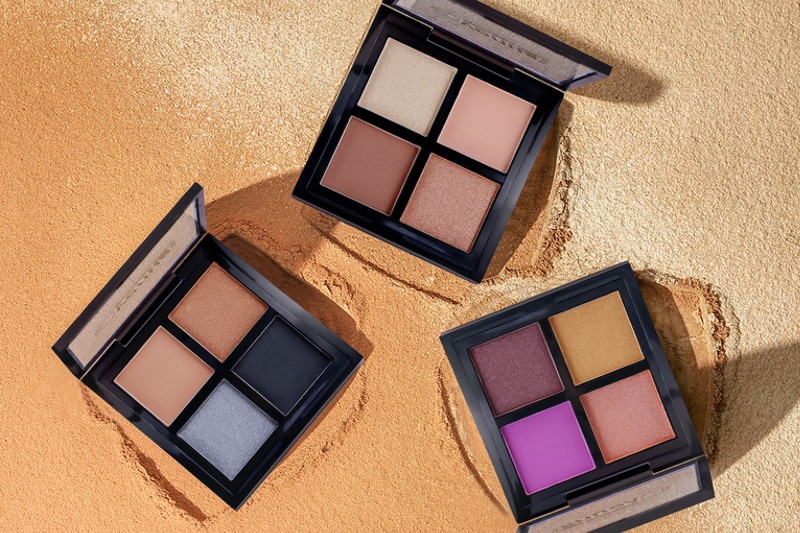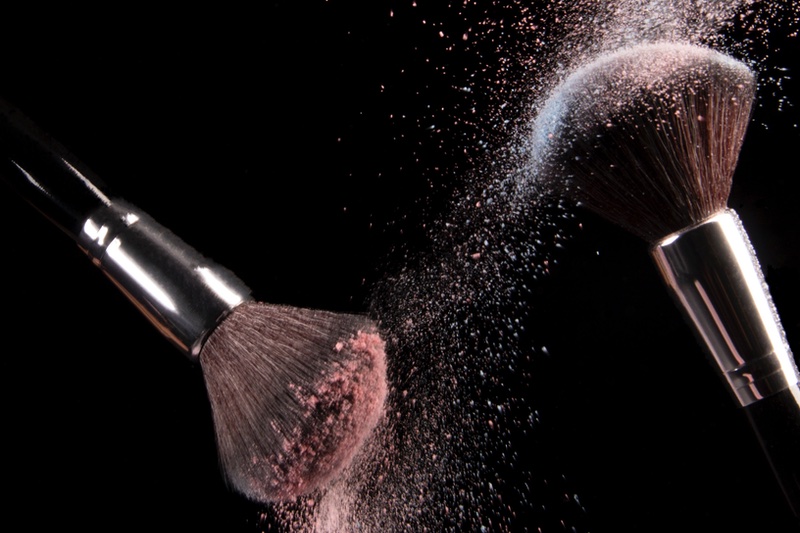
Talc is a celebrated product in dozens of industries. Its ability to be molded into countless shapes and softness on the Rockwell scale make it invaluable to a number of sectors.
Most plastics cannot be made without it, vegetable oil manufacturers use it as a filtration mineral and consumers apply it to their faces and bodies in the form of make-up and moisture-absorbing powders. Talc is part of most people’s everyday lives, whether we are aware of it or not.
Talc’s application in beauty, specifically, is widespread, employed across a plethora of product categories. But despite its worthy place in the industry, its geological make-up means it is near impossible to be mined alone – and one of its closest mineral relative is a known carcinogenic, none other than asbestos.
This compound material is made up of naturally occurring fibrous minerals, composed of needle-like fibres that fall into two categories: amphibole and serpentine. In these two categories there are six types of asbestiform varieties: chrysotile, crocidolite, amosite, anthophyllite, tremolite and actinolite, as defined by the US’ The Asbestos Hazard Emergency Response Act (AHERA).
But asbestos’ danger to humans is particularly bewildering, as it has the ability to linger inside the body over a lifetime, biding its time to cause damage. While a smoker's lungs have the ability to return to normal some years after quitting, asbestos remains in the body forever.
“Once you inhale asbestos it goes into your lungs and it stays there and waits to do the damage we know that it can do. And that’s the inconvenient truth about it,” Sean Fitzgerald, Director of Research & Legal Services at the Scientific Analytical Institute tells Cosmetics Business.
“But there’s a market for talc that has been developed for hundreds of years, where it is highly desirable for its various qualities and not only in cosmetics. We know talc is a very useful mineral and it’s certainly ingrained in our industry. We want this stuff.”
“The problem and what drives me to continue my work, is figuring out what we should regulate,” he adds.
Court battles ensue
The most noteworthy cases brought to court have primarily been against the godfather of talc products Johnson & Johnson.
In 2018, the personal care conglomerate was ordered to pay more than US$4bn in compensation to 22 women who said the company’s talc-based baby powder caused them to develop ovarian cancer. Six of the women lost their lives to the disease.
As a result of major lawsuits brought against it, this year J&J discontinued its talc-based baby powder in the US and Canada, which has been an iconic symbol of the brand since 1894.
But this is just the tip of the iceberg when it comes to the number of court cases brought against the firm. asbestos.com, an advisory website for consumers suffering from mesothelioma, a type of lung cancer associated with asbestos contamination, claims there were more than 19,000 court cases brought against the personal care conglomerate in January 2020 alone, with claimants alleging their cancer was caused by asbestos found in the personal care giant’s talc products.
And this backlash has not just been felt by J&J. Talc mining giant Imerys confirmed a sale of its North American mines in order to pay off lawsuits that it has been embroiled in for the last six years.
Proceeds of the sale will be channeled into an independent trust to compensate claimants and, in return, Imerys will be released from all existing and future talc-related liabilities from its subsidiaries’ operations. Imerys did not respond to questions from Cosmetics Business.
In July, BASF also settled a $73m figure in court, which could be paid out to 20,000 former employees after it was found guilty of knowingly concealing asbestos fibres in its talc products. In a statement to Cosmetics Business, BASF did not deny the claims made against it in court.

So, why are consumers still being diagnosed with asbestos-related disease and, in worst case scenarios, losing their lives? What is a ‘safe’ level of asbestos to have in the body, if indeed, there is one at all?
According to Fitzgerald’s research it’s a murky area. “We don’t have an amount that we can say is safe in the body,” he says.
Michelle Whitmer, a writer for asbestos.com, agrees that most of the minerals found in talc are innocuous, but given cosmetic talc only needs to be 98% ‘pure’ to qualify as such, and asbestos findings from J&J’s latest recalled Baby Powder batch contained 0.00002% asbestos, there is still the opportunity for asbestos to cause damage over a lifetime.
“The stuff that we get in all of our cosmetics is something else other than talc, and that 2% can be a variety of different minerals, most of them are innocuous and they don’t bother people, but sometimes it can be asbestos,” she says.
“It’s usually not a lot, but over time if you’re using cosmetics throughout your entire life and you just so happen to have a particular product that you like that has a high enough percentage to be dangerous over time it can be risky.
“But as we’re seeing for J&J, their baby powder, made of talcum powder, is now being attributed to causing various cases of mesothelioma or ovarian cancer because people are using it throughout their lifetime.
“So, that long-term low exposure can put people at risk for something that, normally, most people get from exposure to asbestos products throughout their lifetime.”
Knowing that there’s no safe amount of asbestos to have in the body, the question arises: why is asbestos finding its way into cosmetics at all?
‘Pure evil’
Given asbestos’ real threat to human life and carcinogenic status, it seems reasonable to expect a certain amount of regulation at the point that the talc is mined. But the reality is, very few such regulations exist.
Currently in the US, there is no law banning asbestos from talc products, but regulations are in place to ensure that talc is mined in areas that are ‘asbestos-free’. But, and it’s a big one, these tests are undertaken few and far between, and test validity has been a bone of contention.

Meanwhile, cosmetics in the EU are regulated under No. 1223/2009, the Cosmetic Products Regulation, but the CPR does not provide any specifications or testing criteria for talc.
A source revealed to Cosmetics Business that asbestos-related tests are undertaken by companies, at best, twice a year to ensure miners are not delving into known asbestos areas, and this in itself is difficult to regulate, given industries buy talc from all over the world.
Tests to ensure talc mines are free from asbestos are done in three ways.
X-Ray diffraction (XRD) is the primary testing method and must be carried out by miners in order to market what they find. But XRD is not the most effective method of testing. In a report published by the United State’s Environmental Protection Agency, it said XRD “may fail to detect small concentrations (<1%) of asbestos”.
And if no asbestos is found in the sample taken from the mine, companies have the authority to certify their talc as asbestos-free.
On the occasion that asbestos is detected by XRD, a second process is used in order to determine absestial minerals, Polarized Light Microscopy (PLM). This method defines asbestos by how it looks under a microscope. If the sample contains asbestiform fibres, composing long and thin crystals, it will show bundles with individual fibres split at the ends, according to analytical testing laboratory ALS Global.
If miners are unlucky enough to find fibres in this testing method, transmission electron microscopy (TEM) is deployed. In this method the fibres can be analysed, as well as their chemical composition and crystal structure to determine if they are asbestos.
However, the Cosmetic Toiletry & Perfumery Association (CTPA) tells Cosmetics Business that these methods are used due to the fact that not all amphiboles, a type of asbestos fibre, can be defined as asbestos, and these testing methods are used “to exclude the presence of any amphibole materials meeting the definition of asbestos”.
In a statement, the association added: “Testing forms an important part of the safety assurance process, but an understanding of the supply chain and a close collaboration between the manufacturer and the supplier is also very important to ensure confidence in the supply of a high quality material.”

But it was confirmed to Cosmetics Business that amphiboles can lend themselves “readily” to become asbestiform, although the CTPA asserts that tremolite, the most common amphibole contaminant, occurs only rarely as the fibrous form, and that court cases often argue whether or not the fibres present in the sample are indeed asbestos.
This lends itself to a whole different argument in the scientific community about what defines asbestos.
But, as scientist Steven Compton, one of MVA's Executive Directors and Project Leaders, said at the FDA’s Public Meeting on testing methods for asbestos in talc and cosmetics products: “You cannot unsee asbestos.” Once it has been found, it should be disproved by another testing method.
So, why is this common practice? Whitmer has a theory.
“It boils down to risk mitigation, companies know these products are going to make people sick, but they know they can afford the lawsuits on the back end as long as they can charge a certain price for the product.
“It’s sad that it really does come across as pure evil, but for them it’s business and it’s their bottom line, and as hard as it is for us as consumers to comprehend that, it’s the way it works for them.
“And the way I envision it, is it seems a little seedy, like they’re just trying to cover each other’s backs and they intentionally use really low grade microscopes when they do the testing of the talc so that way they can’t find asbestos.”
However, the CTPA's Director-General Emma Meredith defended that manufacturers work to detailed specifications to ensure cosmetics are free from asbestiform amphiboles.
"For example, the US Pharmacopeia specification for cosmetic talc states that the 'certificate of analysis states the absence of asbestos. It also indicates which method specified under the test for Absence of Asbestos was used for analysis'," she noted.
"All cosmetics placed on the market must be safe. As well as being the obvious number one priority for a responsible industry, safety is enshrined within the provisions of the EU Cosmetics Regulation, which will be mirrored by the future UK Cosmetics Regulation. It is not possible to place an unsafe cosmetic product on the market lawfully."
This is just a drop in the ocean in the debate of what asbestos should be defined as. But steps are being taken to find a specification for asbestos fibres under the microscope.
The FDA weighs in
Following the high profile court cases brought against talc manufacturers, pressure has intensified on the FDA to regulate the muddied waters of talc mining and find a definition for asbestos fibres.
In response, the FDA launched a Public Meeting to obtain scientific evidence on testing methods, terminology and criteria to characterise and measure asbestos.
“There are challenges in establishing the most suitable approach to test for asbestos in cosmetic products,” said Linda Katz, the FDA’s Director of Office of Cosmetics Colors, at the meeting hosted on 4 February.
“Part of the reason for this challenge is that there’s a need for standardisation, we know that there’s confusing terminology, not everybody interprets the fibres in the same way.
“The data from different labs suffer from a lack of procedural standardisation and some degree of subjectivity; that the reports of findings, specifically how fibres are characterised, counted and pressed, in quantitative and statistical terms are not standardised; and there’s no appropriate reference material.”
At the meeting, three working groups – composed of scientists and experts – presented their findings and recommendations on what asbestos should be determined as. However, no conclusions have been made since the meeting took place as, unsurprisingly, attention has turned to the global pandemic.
But the FDA did respond to
“The FDA continues to investigate and monitor reports of asbestos contamination in certain cosmetic products.”
Times are changing
In her concluding comments at the FDA’s meeting, Katz said more testing and discovery needs to be undertaken.
“That research is needed to minimise false negative or positive rates, improve sensitivity and accuracy of counting, to determine the sources of variation in the sampling, to improve sample preparation methods, such as with concentration methods, and reference standards specific to talc and talc-containing products.
“We also need more research regarding the validation of analytical methods, such as X-Ray Diffraction, Polarized Light Microscopy and Transmission Electron Microscopy.”
Other than J&J taking the monumental decision to stop its talc production in North America, very little else has been reported on in the advancements of regulating the muddied waters of talc mining.
“It seems to me like there needs to be a revolution inside their industry, for them to take it upon themselves to test better,” adds Whitmer.
“To me it seems to boil down to using the right microscopes but this costs more money to do, and it costs more money to hire a scientist who is qualified to use them. I think that companies need to take better steps to ensure they’re protecting the consumers, but it’s hard to know if they’re going to do that.”

But, Fitzgerald hinted that change is on the horizon and maintains that the beauty industry is not taking its foot off the pedal when it comes to regulating talc mining, and more than ever, brands and governments around the world are wising up to the dangers of this carcinogenic mineral.
“It’s all coming to a head,” he says.
“In the last two years, since some of the findings hit the press, where Claire’s Accessories’ products were found to have asbestos, it has created a lot of energy, and been the catalyst for a lot of the meetings, and the FDA has realised that those tests from three or four years ago were right.”
He is also optimistic that the energy put into regulating the talc mining sector will not be lost due to the coronavirus pandemic.
“It’s not dead and it’s not going to die, too much has been said, too much has been done.
“But what’s going to happen in DC? That’s still a big looming question.”
Despite the strides made, campaigning, lobbying and – most importantly – testing must continue in order to ensure asbestos is no longer making its way into beauty products. And it appears the onus is on the heavyweights of the industry to throw their weight behind initiatives and research in order to make headway in regulating this seemingly untamable sector.

